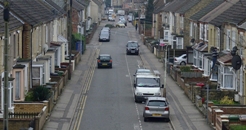 Homelessness and Community
Homelessness and Community
From an article by Enterprise Homes
Enterprise Homes began as a church home group for people with life controlling issues at Grace Church Wolverhampton. As they journeyed with individuals who struggled with mental health, addiction, alcoholism and other issues, they quickly realised that stable accommodation was one of the big obstacles that they faced.
They wanted to find a way to get local churches involved in providing homes for these individuals and the homeless in general. They got involved with Hope into Action as a franchise of the original Hope into Action in Peterborough. 5 years later Hope into Action: Black Country is managing 7 properties for 23 tenants in partnership with 7 churches.
In January 2016, a lady died on the streets of Wolverhampton sleeping rough. They were outraged that this kind of tragedy should still be happening on our streets in the 21st century. They decided that enough was enough and set about setting up what would soon become the Wolverhampton Church Shelter. 3 years later and this has evolved into a permanent night shelter providing 20 beds a night for rough sleepers.
Now they are relocating to a joint building with another homelessness organisation to provide a 24/7 homelessness hub for agencies and individuals to work together providing overnight accommodation, food services, training opportunities, structured day-round activities and opportunities to engage better.
Homelessness is by definition the absence of a home. But what is a home? Some say: “Home is where your heart is”. This means nothing to someone who is sleeping rough and struggling to survive. In this sense home starts off with the understanding that it is a place where your basic needs are met. We predominantly find shelter, food, water, warmth, rest in what we would call “home”. It is also the place where we find safety and security. All of these are our basic needs and for the vast majority of us these things are associated predominantly with the notion of “home”.
It is however possible to satisfy our basic needs outside of the context of the four walls and a roof under which we live. The Wolverhampton Church Shelter provides all of these things to a greater or lesser degree to the guests who stay there and yet they would not call it “home” in any traditional sense of the term.
Maslow’s hierarchy of needs assumes that once we have found some stability in terms of those basic needs, the need for social interaction begins to play a bigger role. Again home is central to this. Home is meant to be the place where we find a sense of belonging, acceptance and love. It is where we seek to fulfil our need to belong and feel like we are a part of something that is greater than just ourselves. It is the epicentre for the nuclear family. It is where in theory we find a sense of acceptance and love from family members, where we know that we will not be judged and where forgiveness will always be available.
Sadly, this is so often not the case. Major studies have found significant links between homelessness in adult life and traumatic childhoods. For the vast majority of those who struggle to find a place to live, “home” growing up was not a place of provision, safety and security. They suffered from abuse, neglect, bullying, family breakdown, substance misuse, domestic violence and extreme poverty. Many of them will have sought to find the things that we value in what we call home, elsewhere. These kinds of issues can lead to gang affiliation, offending behaviour, sexual promiscuity and many other negative and destructive behaviour patterns. The lack of formation of a strong bond with a child’s primary caregiver, often leads to difficulty in forming healthy relationships with others generally and affects social relationships in later life which can be extremely dysfunctional.
Interestingly, Enterprise Homes experience of tackling homelessness is somewhat at odds with Maslow’s hierarchy of needs. He suggests that our basic needs for things such as shelter are more important than our social needs. Yet tenancies given to rough sleepers often breakdown apparently because their need for community is greater than their need for stability, security and shelter.
When you take a person who is sleeping rough and place them in a flat, you may be removing them from their community. Even among people sleeping rough there is a sense of community. Unless you put something in place to provide them with a new community, they will often end up gravitating back to sleeping rough. The issue is not one of house-lessness, rather homelessness. Putting a roof over someone’s head does not provide them with the sense of acceptance and belonging that is needed to find a home. In these circumstances, it actually often alienates them from those things. Homelessness and community have to be understood together if we are to tackle such a prevalent issue in contemporary society.
Understanding such considerations has to be at the heart of how we shape our homelessness services for the future.
Read further parts of this blog here.
Retweet about this article:
From an article by Enterprise Homes, 13/08/2019